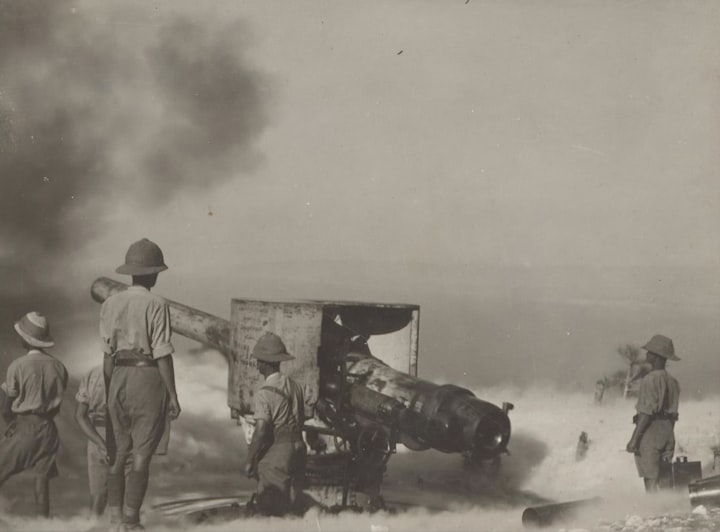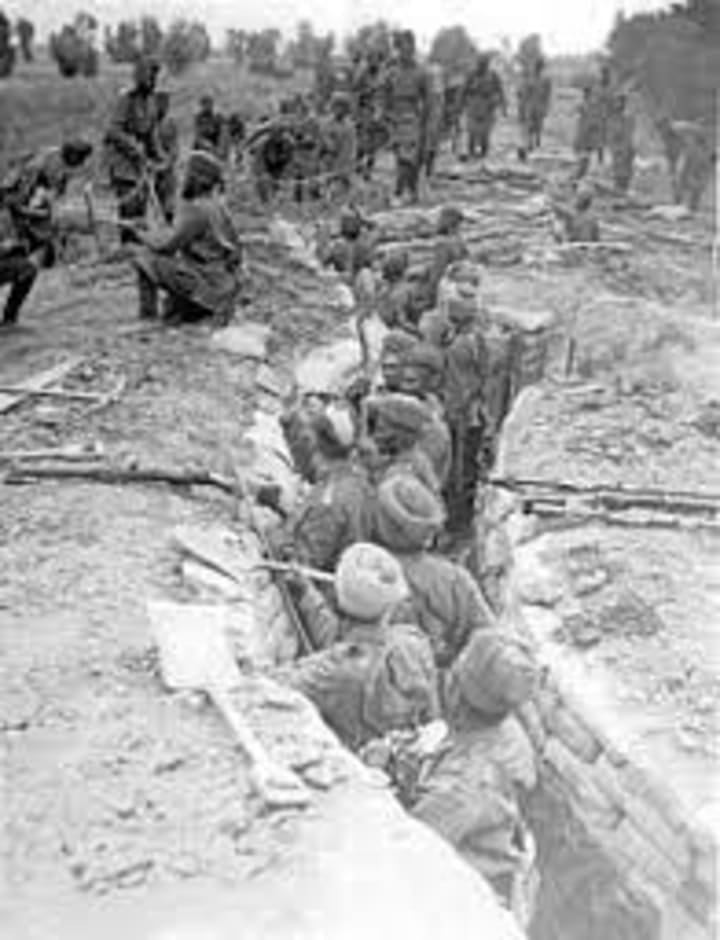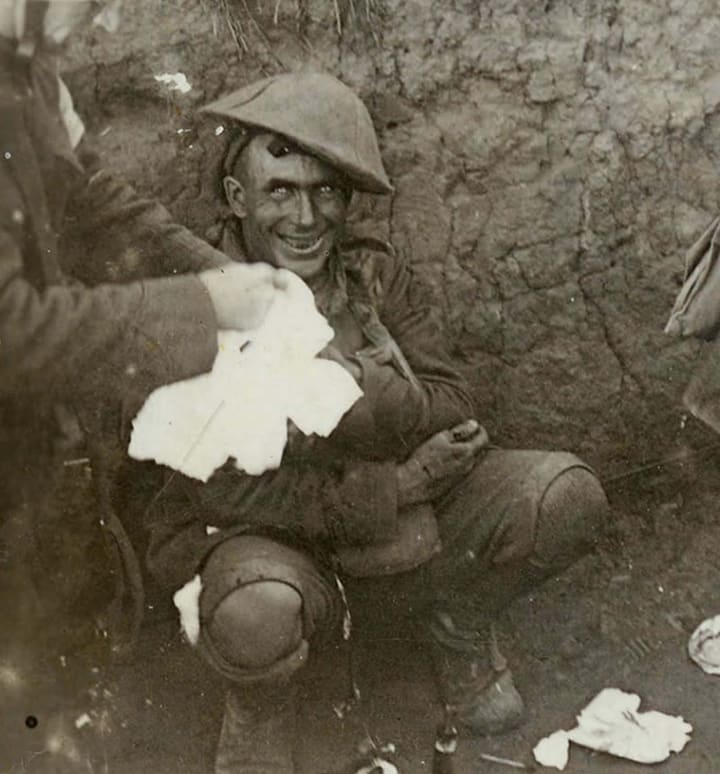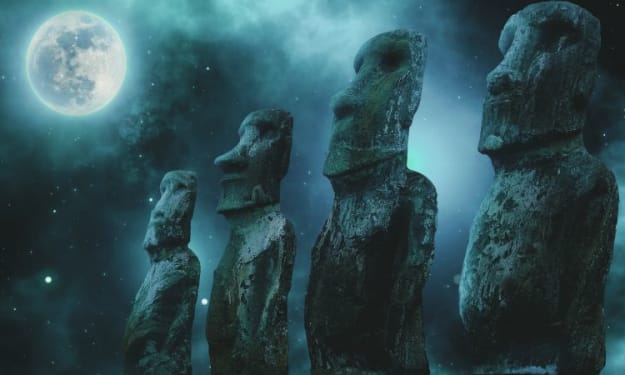World War I
WWI also known as the Great War. This is a more digestible history lesson.

World War I started in 1914, ramping up extremely quickly. A Serbian terrorist named Gavrilo Princip assassinated Archduke Franz Ferdinand of Austria. In response to the assassination, Austria sent their police and military to Serbia to investigate.
Serbia was not happy mostly because it was a terrorist. They didn't send Garvilo Princip. Austria didn't care they still declared war on July 28, 1914. Serbia, frustrated, called up Russia and asked for support. Russia was on Serbia's side and declared war on Austria too. Austria seeing Russia had entered the fight decided to call on Germany.
Germany, not on the best terms with Russia anyways, entered the War on Austria's side. Russia seeing Germany enter decided to call upon France. France liking Russia at the time was like " Oh yea let's go to war with Germany". France then called upon the UK (United Kingdom) and they were all over it. The Ottoman Empire ( Present Day Turkey) joined in the war on Austria's side. Japan later entered into the war on Sebria's side. This was all by November 1914.
Germany had a strategy called Schlieffen Plan. What was the Schlieffen Plan? This plan was to first defeat France, bypassing their fortifications by going through Belgium. After they defeated France they would move to Russia. Did this work? No, Why? France and Belgium resistance as well as British reinforcements. At the end of 1914, the Western Front was mostly trenches from the English Channel to Switzerland. The English Channel to Switzerland is roughly 1203km ( 747 miles). Trenches are basically long narrow ditches.

The Eastern Front was not fought in trenches instead it was head-to-head combat. Neither side could get an advantage. The Eastern Front was in Bulgaria, Romania, Greece, Italy, and others that entered the war between 1915 to 1916.
Then, according to a treaty Italy entered the war. They entered into the war in May 1915. The Treaty of London was a secret agreement between Italy, France, Britain, and Russia. This treaty was to entice Italy to join the war on Austria's side. This agreement promised Italian territorial expansion against the Ottoman Empire (present-day Turkey), Austria-Hungry, and Africa.
A Quick reminder of the sides of the war. The Central powers mainly consisted of Germany, Austria-Hungary, and The Ottoman Empire. The Allied Powers mainly consisted of France, Great Britain, Russia, Italy, Japan, and Serbia.
In 1917, the United States entered the War on the Allies side. They entered as the October Revolution also known as Bolshevik Revolution was happening. This revolution impacted Russian State. This spurred the United States to join the war to stop the spread of communist ideology.
In 1918, the Allied Powers made peace with the Central Powers. Freed from the Eastern front Germany had one last plan. They launched an attack in the West. This was an attempt to achieve victory before American Soldiers arrived. This failed. Allied forces launched an offensive (Attack) on the German Imperial Army, which was demoralized and exhausted, in August 1918. German forces couldn't stop the advancement.
Between September and November, Bulgaria, the Ottoman Empire, and Austria-Hungary agreed to armistices (orders to stop fighting) with the Allies. Leaving Germany alone. Kaiser Wilhelm II, the last emperor of Germany was very close to a revolution. So, he abdicated (renounced his throne). The Armistice of 11 November 1918 stopped the fighting bringing an end to WWI.
What Happened After WWI?
After WWI was finished four empires collapsed. New boundaries were drawn and empires formed. International organizations were formed along with ideologies. Germany, Turkey, and Great Britain brought nearly universal suffrage.
The Treaty Of Versailles
This treaty defined the terms of peace between the Allies and Germany. The Allies held Germany responsible for the war. Due to this, they put harsh restrictions on Germany. What were the restrictions? They were loss of territory, massive reparations payments, and demilitarization. This highlighted issues that caused the war. This treaty caused Germany economic distress and resentment toward the Allies. This economic crisis and resentment brought rise to Adolf Hitler. Leading to WWII.
This picture is of the WWI trenches in recent years. Let's get real for a second. WWI was a tragedy and millions died to settle an argument. Please take the time to look at THIS article. This link is a timeline of WWI.

WWI Technology
There were a lot of technological advancements during the First World War. What all got developed? Machine guns changed the way this war was fought, they were now able to mow down rows upon rows of soldiers. Barbed wire and mines made old warfare tactics dangerous. This led to trench warfare. During WWI airplanes, tanks, and artillery took the battlefield by storm. Air attacks became dangerous reminders of the new technology.
Chemical warfare was introduced during WWI. On April 22, 1915, German specialists released gas causing asphyxiation. This was chlorine gas which irritates lung tissue and can cause death. This caused panic. There was no way to protect soldiers from this so, they used masks socked in water made out of lint and tape. This was the first chemical attack, but not the last. If you want to learn more click here.
Shell Shocked
Shell Shocked was a term coined during WWI by soldiers. Shell Shocked soldiers were described as having one or more of the following, fatigue, tremor, confusion, nightmares, and impaired sight and hearing. They knew when a soldier was suffering from Shell Shock when they were unable to function. It was scary and traumatic. Want to learn more click here.

Conclusion
WWI was a deadly war that was caused due to the assassination of Archduke Franz Ferdinand of Austria. It brought technological advancement and dangerous chemical warfare. Trench warfare caused many soldiers to become Shell Shocked. The Treaty Of Versailles led to WWII. This War caused a lot of sadness and death.
Sources
https://en.wikipedia.org/wiki/World_War_I
https://www.history.com/topics/world-war-i/world-war-i-history
https://www.theworldwar.org/learn/about-wwi/spotlight-first-usage-poison-gas
https://www.census.gov/history/pdf/reperes112018.pdf
https://www.history.com/topics/world-war-i/treaty-of-versailles-1
https://wwiifoundation.org/timeline-of-wwii/
I hope you learned something from this article. Please check out these different charities and donate if you can, Click HERE!






Comments
There are no comments for this story
Be the first to respond and start the conversation.